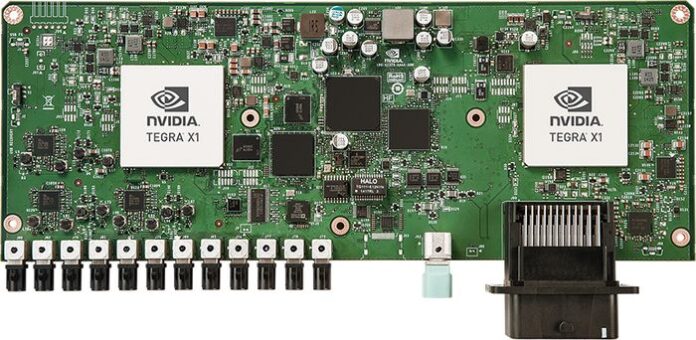Drive PX mimics brain with deep learning
LAS VEGAS – Connected car technology was the talk of CES 2015 and imaging giant Nvidia, debuting its new Tegra X1 mobile processor, demonstrated a digital cockpit and infotainment platform, Drive CX, along with the highly advanced Drive PX computer, which looks ahead to fully autonomous vehicles.
Drive CX provides 3D advanced navigation and media content, a dynamic high-resolution instrument display, speech processing and driver assistance imaging.
Dave Anderson, senior automotive integration manager for Nvidia, told RCR Wireless News that the X1 “allows us, again, to do many things concurrently. It’s an amazingly powerful device.”
Drive CX is capable of integrating third-party software applications, Anderson said, calling it “totally software extensible”
The connected cars platform is compatible with the Android mobile operating system.
“This is basically Android auto,” Anderson said. “It’s your Android functionality from your phone embedded into your automotive application.”
Also using the Tegra X1, Nvidia’s Drive PX car computer uses deep learning, a form of computer intelligence based off the design of a human brain, to provide advanced driver assistance systems.
Jonathan Cohen, Nvidia’s senior manager for CUDA libraries and algorithms, explained deep learning as a “set of machine learning algorithms … for teaching your computer how to understand the world around it.”
He demonstrated how the Drive PX could analyze video from car-mounted cameras and, comparing the video to a database of examples, detect vehicles, pedestrians and other road/environmental details.
Cohen showed CES attendees video of a rainy, night drive in the United Kingdom.
“Because this is a neural network, we’ve shown it lots of examples of these 40-mile-per-hour limited speed signs. Somehow it has learned to recognize the speed sign even though it hasn’t seen these signs before. This is the power of neural networks and the power of deep learning.”
The Tegra X1 supports 1.3 gigapixels/second throughput, which is capable of joining 12 two-Megapixel cameras at up to 60 frames per second.
For more from the 2015 Consumer Electronics Shows, check out the RCR Wireless News YouTube channel.

